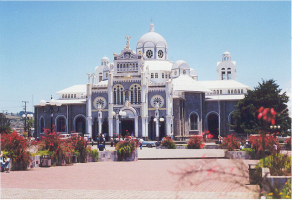Top 7 Most Beautiful Historical Sites in Ethiopia
Ethiopia is a tropical country in the Horn of Africa. People have lived and farmed in Ethiopia since the 9th and 6th millennia BC. Ethiopia was once centered ... read more...in Axum, which rose to become the imperial capital. As one of the world's oldest countries, Ethiopia has a plethora of great historical places to see. Lalibela Rock Churches, Harar Jugol, and the imperial metropolis of Axum are among the greatest. Explore Ethiopian cultural icons like these with our guide to the 7 best beautiful historical sites to visit in this magnificent African country.
-
One of the most beautiful historical sites in Ethiopia, Gondar Castle is the name given to an extensive complex of palaces and castles in Gondar, Ethiopia. Locals and guidebooks refer to it as the Royal Enclosure. It is located in the town center and is easily accessible by foot or tuk-tuk. Fasil Ghebbi Palace is another name for it. This was one of the most intriguing and well-preserved sights we saw in Ethiopia, and it is a UNESCO World Heritage site. The entire structure, which spans 70,000 square meters and goes back to the 17th century, is known as the Camelot of Ethiopia by historians.
When you enter the facility and purchase your ticket, you will be accosted by a member of the local tour guide organization. Having a guide is optional, so don't feel obligated to hire one. We chose to depend on some material from our guidebook, which resulted in us missing out on the complete experience of the place.
Fasil Gemb, also known as Fasilides' Palace, is the first structure on your right. By far the most spectacular edifice in the complex. Designed by an Indian architect and notable for its various fusions of Indian, Portuguese, and Moorish elements. Emperor Fasilides defied convention by establishing and claiming Gondar as his capital. He enclosed his palace with a wall that had twelve gates, and inside that wall is what is now known as the royal enclosure. While at Fasilides' Palace, explore the dining halls, reception area, and prayer chamber; keep an eye out for the Star of David reliefs.
After you've completed Fasilides' Palace, the kitchen, and the steam bath structures, seek for the remnants of Iyasu I's Palace. Even though it is mostly a shell, walking among the remains and imagining what it was is fascinating. We walked past the Library, which had been plastered over by the Italians and was now closed, to Fasilides' Archive. Only the tower and walls remain from the archive, however you may climb the steps to get a better view of the grounds.Address: Gondar, Amhara, Semien Gondar, Ethiopia
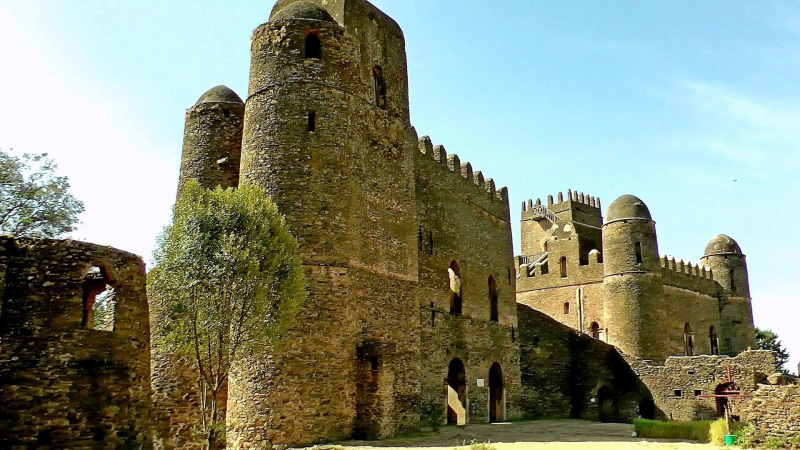
Photo: pinterest.com 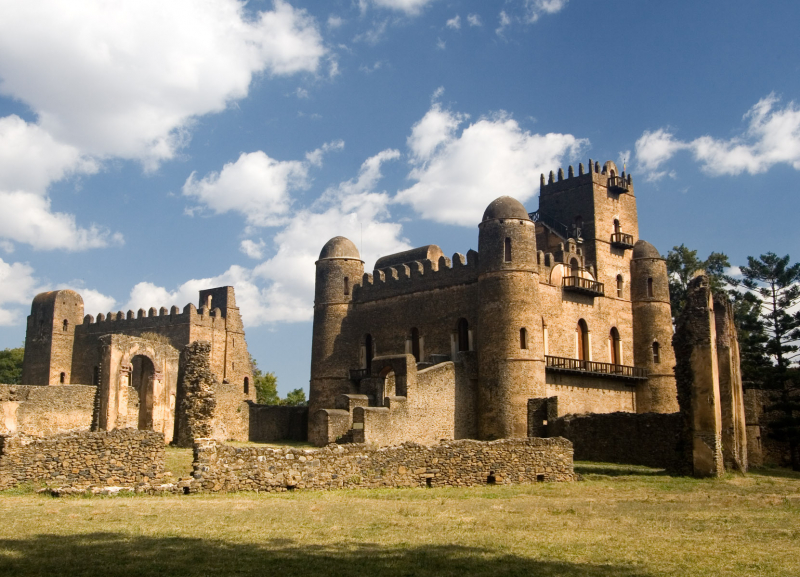
Photo: abiyethiopiatours.com -
The Church of Saint George, known locally as Bete Giyorgis, was erected by King Gebre Mesqel Lalibela of the Zagwe dynasty and is a monument of enormous cultural and religious significance. This is one of the most beautiful historical sites in Ethiopia.
The Church of St. George was cut downwards from volcanic tuff. This is the only architectural material employed in the building. It is considered to have been built during the reign of King Gebre Mesqel Lalibela of the late Zagwe dynasty in the late 12th or early 13th century AD. It is one of the most well-known and recently constructed of the eleven churches in the Lalibela region, and has been dubbed the "Eighth Wonder of the World." Lalibela, King of Ethiopia, aimed to recreate Jerusalem and designed the churches' environment and holy locations to accomplish this goal. "At Lalibela, the churches are divided into two large groups, one representing earthly Jerusalem and the other representing heavenly Jerusalem." A trench depicting the Jordan River runs exactly between them." The trench is 25 meters by 25 meters by 30 meters, and there is a little baptismal pool outside the chapel in an artificial trench.
According to Ethiopian cultural history, Bete Giyorgis was erected after King Gebre Mesqel Lalibela of the Zagwe dynasty had a vision in which he was told to build the church; Saint George and God have both been alluded to as the source of the instructions.
Lalibela is a pilgrimage place for Ethiopian Orthodox Tewahedo Church adherents; the church is part of the UNESCO World Heritage Site "Rock-Hewn Churches, Lalibela."Address: Lalibela, Amhara
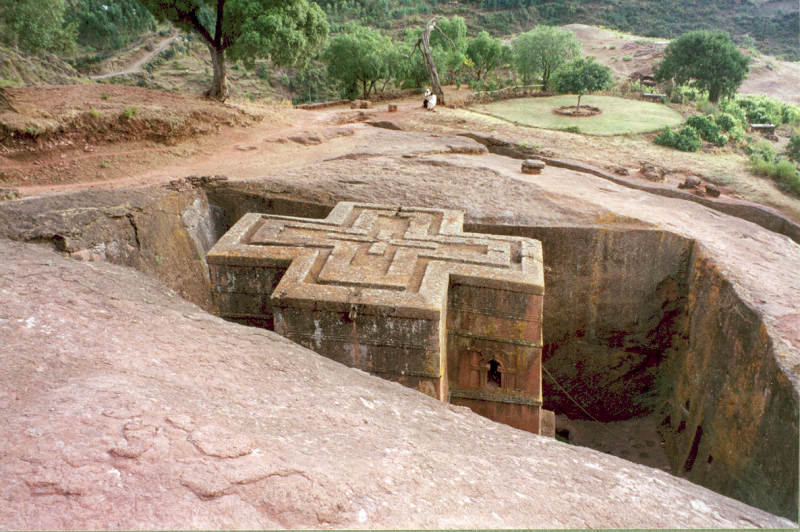
Photo: wikimedia.org 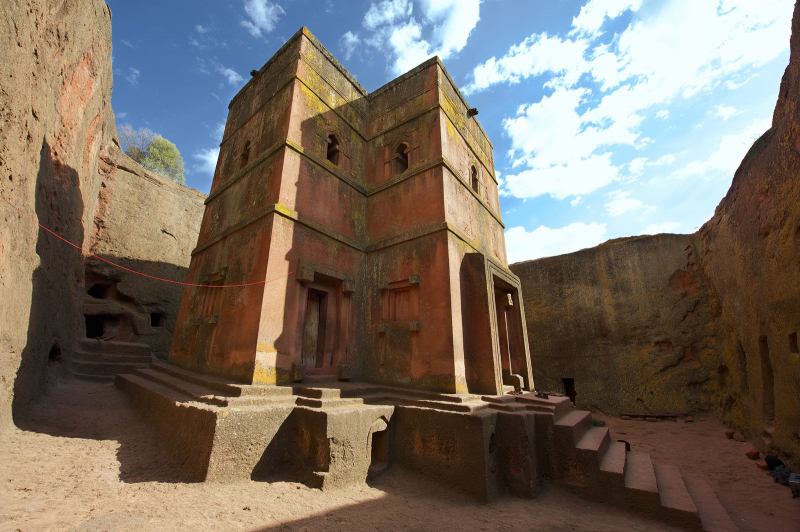
Photo: suzannelovellinc.com -
Yeha Temple is a beautiful Ethiopia's historical stone tower and discovered near the village of Yeha in the Mehakelegnaw Zone of northern Tigray, is built in the Sabean style, which is typical throughout most of Sub-Saharan Africa.
The temple of the moon, which towers above the little hamlet that many claims to be the country's pre-Aksumite capital, was erected in honor of the deity Almougah during the reign of D'mt circa 700 BC. Stone carved inscriptions discovered across the site tell epic stories of Almougah's splendor and their ability to shut off the harsh merciless sun.
Despite its now deteriorated exterior, people who pass through the five-meter tall gateway into a huge hall with a deep pool in the center, which was used for ceremonial and sacrificial reasons, are filled with awe. All of the limestone used in its construction came from a local quarry about 90 miles away, and it was erected without the use of cement or mortar, which adds to the mystery of its durability.
As Christianity expanded throughout the country, the location was taken by early believers and developed into the monastery St Abuna Aftse, which still stands today.
Several archaeological excavations have taken place in the region, many of which are currently continuing, revealing millennia of history. Yeha temple and her long glorious history are slowly being revealed beneath the changing sands that surround the monument as new levels are excavated.
Address: Yeha, Tigray
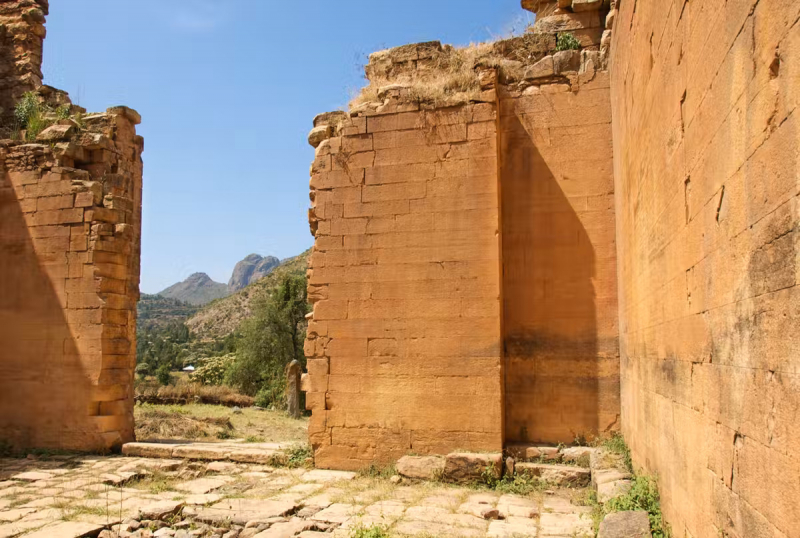
Photo: brilliant-ethiopia.com 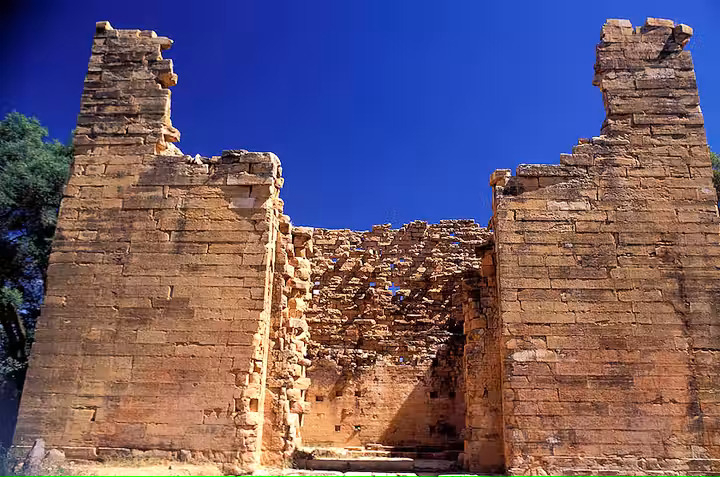
Photo: brilliant-ethiopia.com -
For people interested in African history, the walled city of Harar is of immense importance. The wall itself was erected in the 16th century on the instructions of Emir Nur ibn Mujahid and stands now at its full height of nearly 4 meters (13.1 ft). This is one of the Emir's two monuments; the other is his elaborate mausoleum, which lies on a hill surrounded by homes and is a pilgrimage site for Ethiopian and Somali Muslims.
The Tomb of Emir Nur is located in Harar, Ethiopia, approximately 0.65 kilometers from Harar. There are various amazing sites in Harar around the Tomb of Emir Nur that you should visit as a true adventurer.
Emir Nur ibn Mujahid's Tomb - The Tomb of Emir Nur resembled a large turquoise beehive. The mausoleum, located in a shaded area off a narrow street, is holy and revered by the Muslim people. In 772, Emir Nur was Governor of Harar and erected Harar's fortifications to protect its people from the Oromo. Patches of earth surround his tomb, with a few bricks delineating family graves.Address: Harar, Eastern Ethiopia.
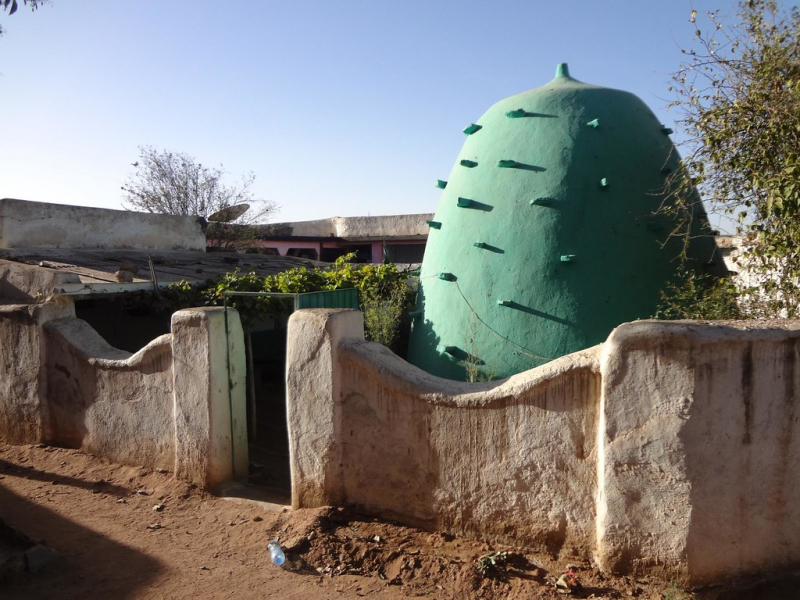
Photo: flickr.com 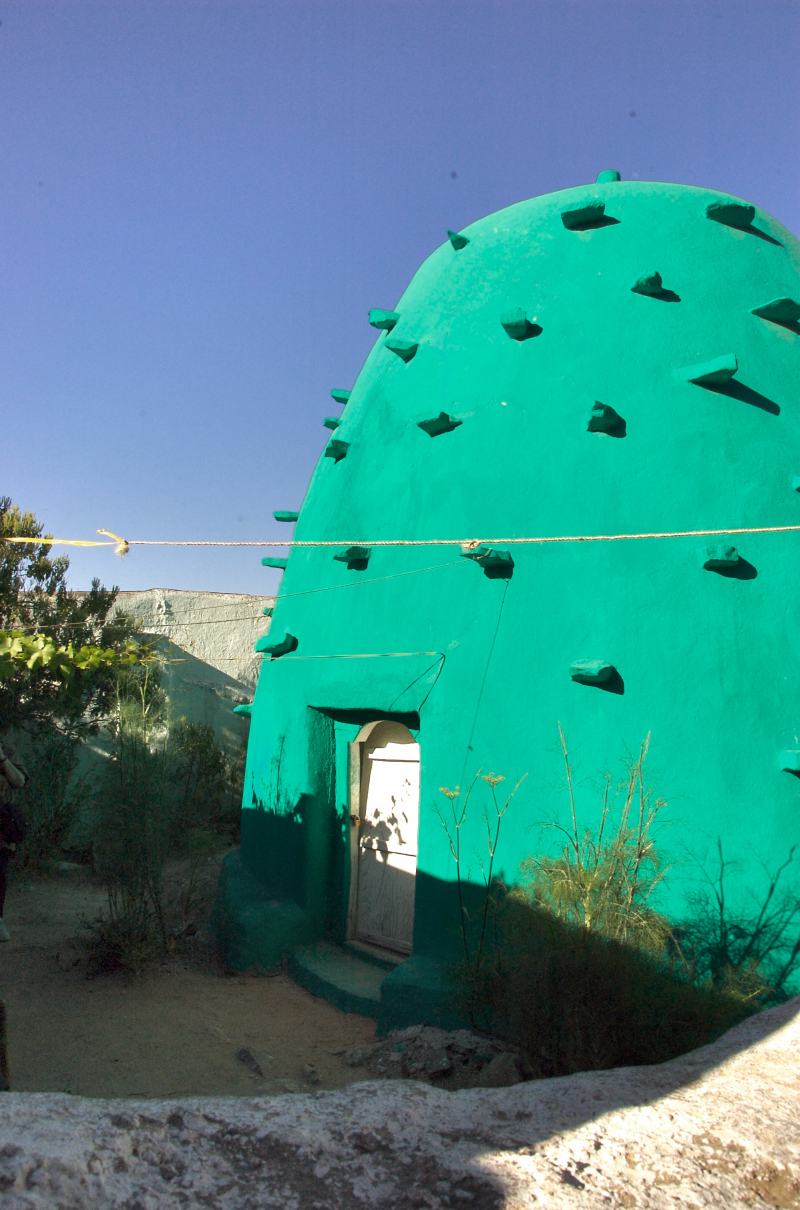
Photo: wikiwand.com -
The Lower Awash Valley paleo-anthropological site is on top beautiful historical sites in Ethiopia. It's located in the west of the Afar Depression, 300 kilometers northeast of Addis Abeba. It has an area of around 150 km2.
The Awash Valley is home to one of the most significant collections of paleontological sites on the African continent. The bones discovered on the land, the oldest of which date back over 4 million years, show evidence of human evolution, which has altered our understanding of human history. The most remarkable find occurred in 1974 when 52 skeletal parts allowed the legendary Lucy to be rebuilt.
Excavations began in 1973 by a multinational team of paleontologists and pre-historians, continued annually until 1976, and terminated in 1980. They discovered a vast number of fossilized hominid and animal bones in a remarkable condition of preservation at the time, the oldest of which were at least four million years old. The valley provided the most complete collection of bones of a 3.2 million-year-old hominid skeleton, Australopithecus afarensis, dubbed 'Lucy,' in 1974. Afarensis has now been proven to be the ancestor of both the Australopithecus and Homo-sapiens genera.
The 4.4 million-year-old female skeleton called 'Ardi' is 1.2 million years older than the Australopithecus afarensis 'Lucy' skeleton.
There is a multitude of paleo-anthropological and pre-historic tools that have yet to be discovered and scientifically studied, and these are regarded as an extraordinarily valuable cultural legacy resource.
Address: Afar region, Ethiopia
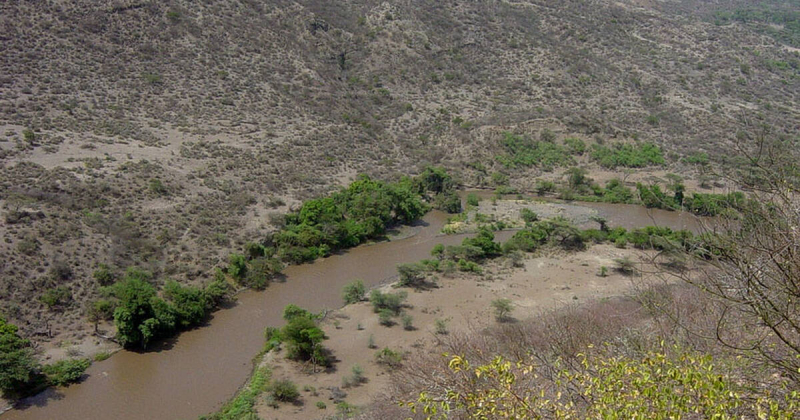
Photo: unesco.org 
Photo: addisherald.com -
One of the top most beautiful historical sites in Ethiopia, these two graves, located on a tiny hill 1.8 kilometers northeast of the Northern Stelae Field and giving views of the jagged highlands of Adwa, are attributed to the 6th-century King Kaleb and his son, King Gebre Meskel, according to local folklore. Although the construction of the twin graves is similar to that of the Tomb of the False Door, they are more sophisticated, with irregular-shaped, self-locking stones that do not require iron clamps.
The most sophisticated tomb is the Gebre Meskel (south) tomb. The perfection of the joints between its stones is unparalleled in Aksum. The tomb has one chamber and five chambers, one of which has an extraordinarily well-carved entrance leading into it. There are three sarcophagi in that room, one of which is ornamented with a cross comparable to the Christian crosses found on Aksumite coinage. This leads to a date in the sixth century AD, which, unusually, agrees with local legend... Even though the rest of the narrative has Meskel buried at Debre Damo.
King Kaleb's tomb, like Meskel's, is reached through long straight stairs. Inside, the stones are bigger, more angular, and less neatly connected. Few believe Kaleb was buried here. The popular belief is that his remains are buried at the Abba Pentalewon monastery, where he lived after abdicating the crown. The tomb's incomplete condition matches the hypothesis. According to local legend, a hidden tunnel connects here to the Red Sea.Address: Enno Littman St., Aksum, Ethiopia
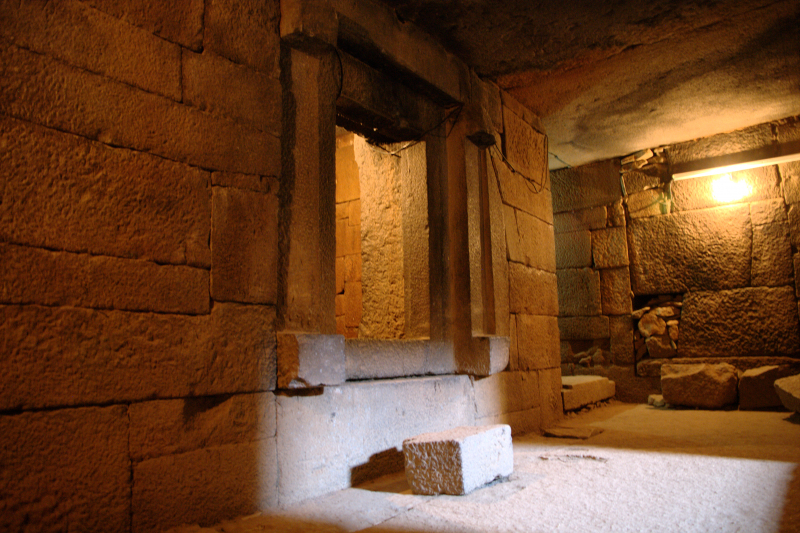
Photo: flickr.com 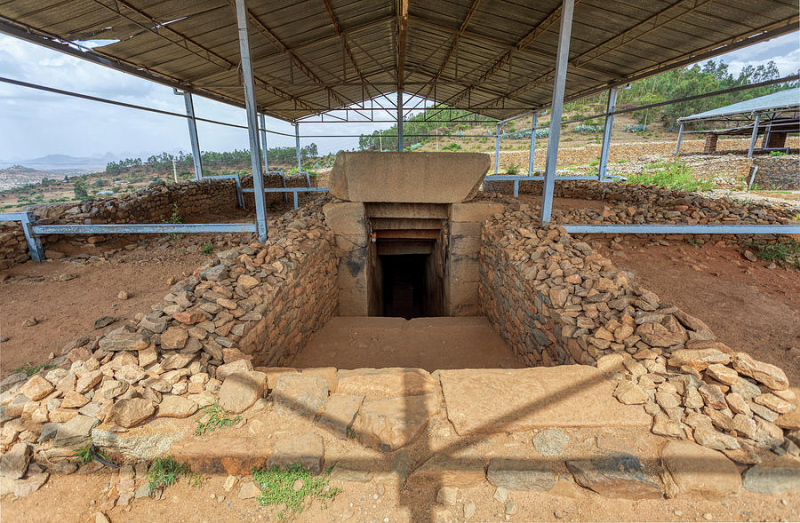
Photo: fineartamerica.com -
To a large part, Ethiopia's early history revolved around the stories of the Queen of Sheba (Ethiopian) and King Solomon of Israel, who had a son who established the Solomonic Dynasty in and around ancient Axum (Aksum).
The Queen of Sheba, an "exotic and enigmatic woman of power," is one of the great religious characters included in the Old Testament, Hebrew Bible, and Muslim Koran. Her Palace may be situated just here in Axum. Why wouldn't you want to come here and soak in the view and shoot some photos?
The structure in Dungur is commonly referred to as Queen of Sheba's Palace, while archaeologists differ on whether it was the great woman's palace or a nobleman's house from the 6th century AD. Most people believed the latter, however, the recent discovery of a relief carving depicting a gorgeous woman (in the museum of St Mary of Zion Church) has prompted some to hypothesize that her castle may remain beneath the existing ruins. This is an important historical site in Ethiopia.
Climb the observation tower at the back of the property for a panoramic view of the 50-room layout. It features little bare stones and walls that are recessed at intervals and taper oddly with height. The well-preserved flagstone floor is likely to be from a throne chamber. The palace also has hidden treasure chambers, a private bathing area, and a kitchen with a massive brick oven. The stairwells indicate that there is at least one above the floor.Address: Aksum, Ethiopia
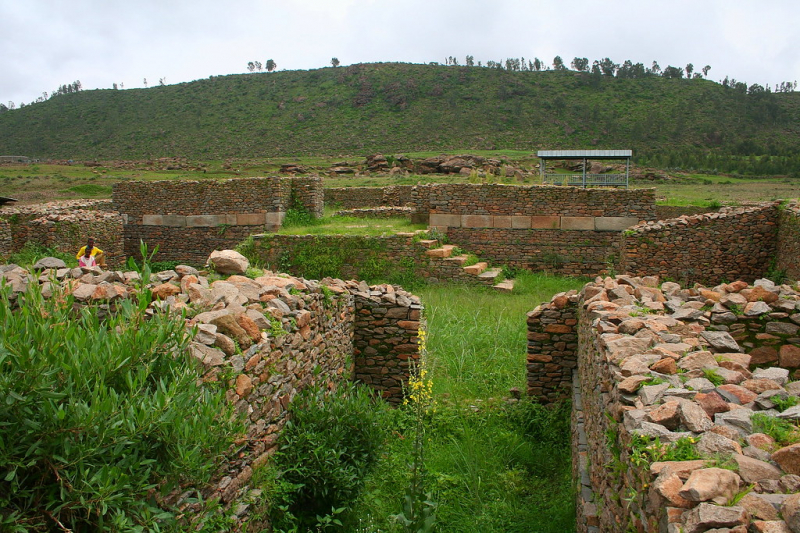
Photo: flickr.com 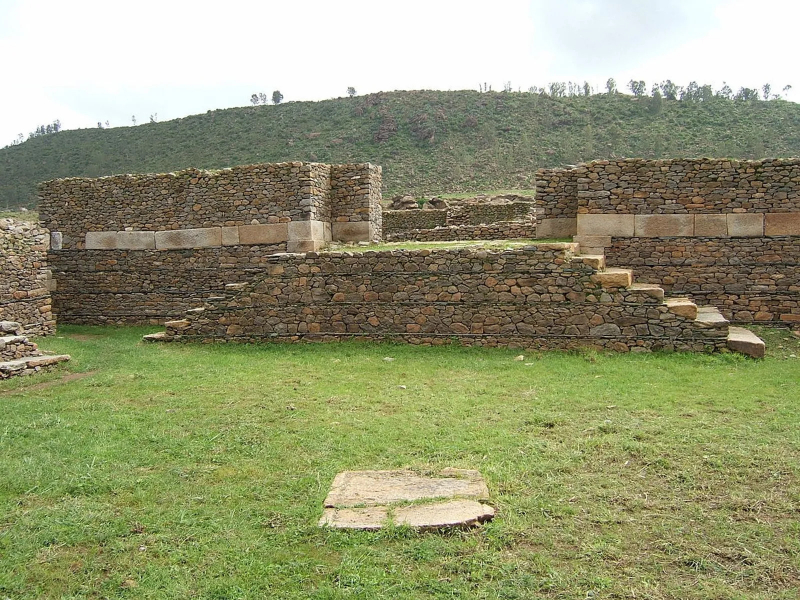
Photo:addflag.com




























